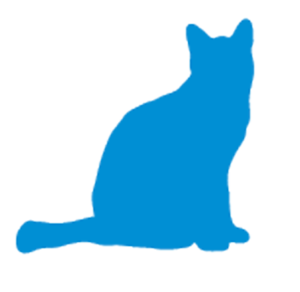Difference between revisions of "Feline Compulsive Disorders"
Ggaitskell (talk | contribs) |
|||
| (10 intermediate revisions by 3 users not shown) | |||
| Line 1: | Line 1: | ||
{{Navigation2 | {{Navigation2 | ||
|title = Feline Compulsive Disorders | |title = Feline Compulsive Disorders | ||
| − | |categories =[[Feline Behaviour]] | + | |categories =[[Feline Problem Behaviour]] |
| − | |text = | + | |text = Compulsive disorders involve repetitious, ritualised behaviours that are out of context and serve no function. In cats, the commonest forms of compulsive disorder relate to grooming, but tail chasing, light and shadow and the consumption of non-food items (pica) are also seen. In humans, repetitive behaviours are associated with a wide range of neurological and mental health problems, and the former classification of compulsive disorders has changed to take into account the specific aetiology associated with certain conditions. For example, trichotillomania in humans is now considered a form of impulse control disorder (a body-focussed repetitive disorder), rather than a classical compulsive disorder. It is likely that, with further knowledge, conditions currently described together as compulsive disorders in animals will be found to have a diverse aetiology. Feline hyperaesthesia syndrome is an existing example of this; formerly it was considered a compulsive disorder, and although it's aetiology not fully understood it is no longer considered to be a compulsive disorder. It is included in this section for convenience. |
|content = | |content = | ||
:[[Feline Compulsive Disorders - Overview|Overview of Feline Compulsive Disorders]] | :[[Feline Compulsive Disorders - Overview|Overview of Feline Compulsive Disorders]] | ||
| Line 11: | Line 11: | ||
|resources = | |resources = | ||
}} | }} | ||
| + | <br} | ||
| + | {{Jon Bowen written | ||
| + | |date = 27 August 2014}} | ||
| + | |||
| + | {{Ceva}} | ||
| + | {{OpenPages}} | ||
| − | |||
[[Category:Feline Compulsive Disorders]] | [[Category:Feline Compulsive Disorders]] | ||
[[Category:Feline Problem Behaviour]] | [[Category:Feline Problem Behaviour]] | ||
Latest revision as of 09:39, 16 July 2015
| ||||||||
| ||||||||
<br}
| This article has been written and expert reviewed by Jon Bowen BVetMed DipAS(CABC) MRCVS. Date reviewed: 27 August 2014 |
| The creation of this content was made possible by Ceva Santé Animale as part of the feline behaviour project. |
Error in widget FBRecommend: unable to write file /var/www/wikivet.net/extensions/Widgets/compiled_templates/wrt693ae7712c3df5_14187574 Error in widget google+: unable to write file /var/www/wikivet.net/extensions/Widgets/compiled_templates/wrt693ae77132c646_38913698 Error in widget TwitterTweet: unable to write file /var/www/wikivet.net/extensions/Widgets/compiled_templates/wrt693ae771397150_23391803
|
| WikiVet® Introduction - Help WikiVet - Report a Problem |
